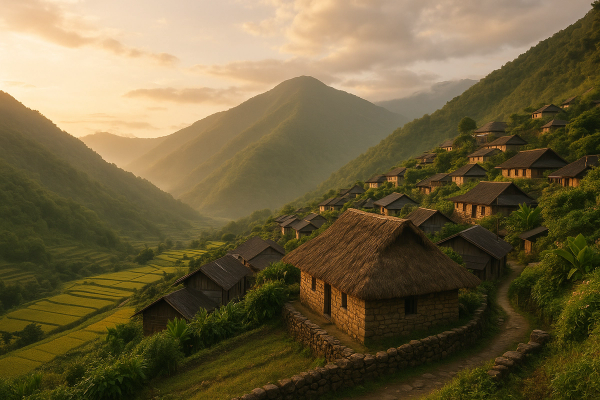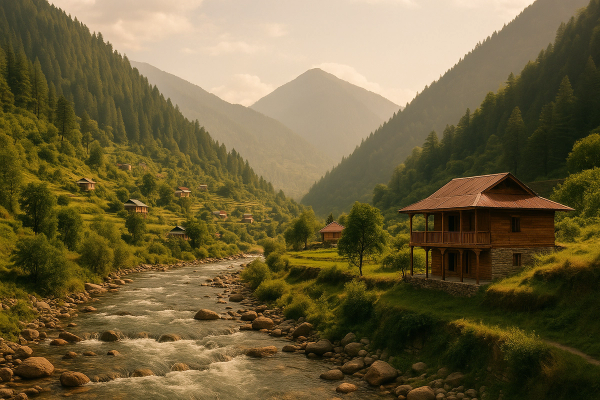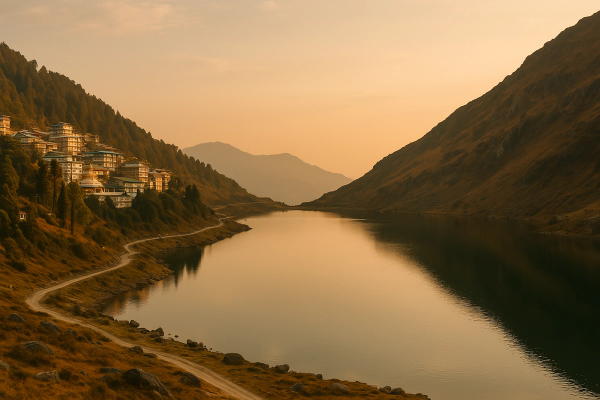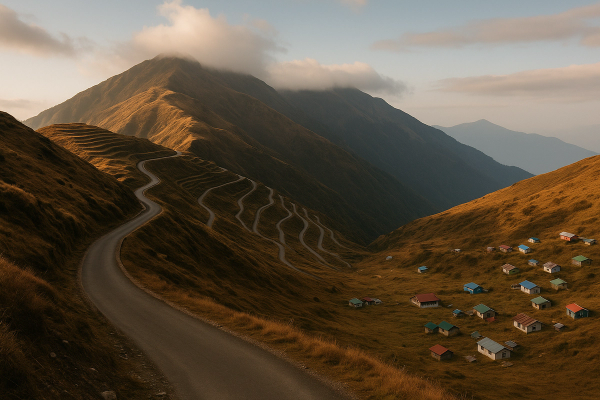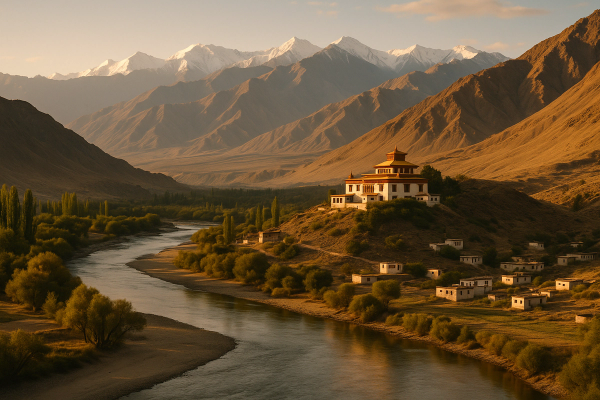
Okay, Let's Talk Andes: Mountain Trekking in Peru & Not Feeling Like Death#
So, you're thinking about mountain trekking in the Peruvian Andes? First off, amazing choice. Seriously, the views are insane, the culture is incredible, and the feeling of accomplishment after a tough trek? Chef's kiss. But here’s the deal, the bit nobody really loves talking about but absolutely HAS to: the altitude. Preparing for high altitude isn't just a suggestion; it's pretty much mandatory if you don't want to spend your dream trip feeling like you have the world's worst hangover. Trust me on this one.¶
I remember my first time heading to Cusco... I was SO stoked for the Inca Trail, booked months in advance, y'know? Flew straight into Cusco (big mistake, btw) and basically went from sea level to 11,000+ feet in a few hours. Hoo boy. Let's just say the first 24 hours involved a pounding headache and wondering if I'd actually make it out of my hostel bed. Not ideal. So, this whole post? It's basically everything I wish I'd known back then, shared like I'm chatting with you over coffee (or maybe a pisco sour?). We'll cover how to prep so you can actually enjoy those breathtaking mountains.¶
The Peruvian Andes: More Than Just Pretty Peaks#
When people say 'Peruvian Andes,' they usually mean the massive mountain range cutting through Peru, home to iconic spots like Machu Picchu, Rainbow Mountain, and countless epic trails (Ausangate, Salkantay, Lares... the list goes on). Cusco is kinda the main hub for trekkers, this old Inca capital sitting wayyyy up high. It's got this amazing mix of Inca stonework and Spanish colonial buildings, bustling markets, and, yeah, thin air.¶
The Andes aren't just geographically significant; they're the heart of ancient and modern Quechua culture. You'll see folks in traditional dress, hear the language, and feel this deep connection to the Pachamama (Mother Earth). It’s powerful stuff. But the key thing for us trekkers? Most of these incredible places are seriously high up, like 3,000 meters (10,000 feet) and way beyond. That's why altitude is the name of the game.¶
When Should You Go Trekking in Peru?#
Timing is pretty important, especially for trekking. You basically have two main seasons:¶
Dry Season (Roughly May - September)#
This is peak season for a reason. Think clear blue skies, sunny days, and much less chance of rain ruining your trek. It's ideal for photos and generally more pleasant hiking conditions.¶
- Pro: Best weather, stunning views almost guaranteed. Trails are usually in good condition.
- Con: It's COLD at night. Like, freezing high up. Also, it's peak tourist season, so trails (especially the Inca Trail) and Cusco/Machu Picchu will be crowded, and prices might be higher.
My take? I went in June/July. Yeah, it was busy, but those crisp, clear mountain views were worth dodging a few elbows. Just book popular treks WAY in advance.
Wet Season (Roughly November - March)#
Okay, 'wet season' means rain. Sometimes drizzle, sometimes downpours. It's warmer overall (especially nights), and things are super green and lush, which is beautiful in its own way. Fewer crowds, too.¶
- Pro: Greener landscapes, fewer tourists, potentially lower prices. Warmer nights.
- Con: RAIN. Trails can get muddy and slippery. Views might be obscured by clouds/mist. Crucially: The classic 4-day Inca Trail is CLOSED every February for maintenance.
Honestly, unless you really hate crowds or are on a super tight budget, I'd probably aim for the dry season or shoulder season (April/October) for a better trekking experience. Mudslides are a real thing in the wet season.
Getting There & Acclimatizing (Super Important!)#
Most people fly into Lima (LIM) first, Peru's capital, which is at sea level. Then, you catch a domestic flight to Cusco (CUZ), Alejandro Velasco Astete International Airport. And here's tip #1:¶
DO NOT fly into Cusco (11,152 ft / 3,399 m) and plan a strenuous hike the next day. Seriously. Don't do it. Your body needs time to adjust.
Flying into Cusco: The Smart Way#
The flight from Lima to Cusco is short, like 1.5 hours. Airlines like LATAM, Sky Airline, and JetSMART run this route frequently. It's scenic! But once you land...¶
- Take it EASY: Walk slowly. Drink water. Maybe grab some coca tea at the airport or your hotel.
- Consider the Sacred Valley First: Some people recommend actually not staying in Cusco immediately. Instead, take a taxi or colectivo (shared van, way cheaper) straight to the Sacred Valley – places like Ollantaytambo (9,160 ft / 2,792 m) or Urubamba (9,420 ft / 2,871 m) are lower than Cusco. Spend your first 1-2 nights there acclimatizing before heading up to Cusco. I did this on my second trip and felt WAY better.
Getting Around for Acclimatization#
In Cusco, taxis are everywhere (agree on a price beforehand or make sure they use the meter, though many 'don't work' lol). Uber/Cabify work too. Colectivos are great for getting between towns in the Sacred Valley – super cheap, just ask locals where the stops are. Walking around Cusco is great, but again, slowly at first.¶
Costs are pretty reasonable. A taxi from Cusco airport to the historic center might be 20-30 soles (~$5-8 USD). A colectivo to Ollantaytambo might be 10-15 soles (~$3-4 USD). Bargain respectfully!¶
Where to Stay While You Adjust#
Like I said, consider starting lower in the Sacred Valley. But Cusco is where most trek briefings happen, so you'll likely spend time there too.¶
Sacred Valley Chill Spots (Lower Altitude)#
- Ollantaytambo: Cute town with amazing Inca ruins, feels more relaxed than Cusco. Good base for exploring. Lots of guesthouses and some nicer hotels.
- Urubamba: Bigger town, more local feel, plenty of hotel options across budgets. Less touristy.
Cusco Neighborhoods#
- Historic Center (Plaza de Armas): Convenient, beautiful, but can be noisy and pricier. Good for first-timers.
- San Blas: Artsy, bohemian neighborhood uphill from the Plaza. Gorgeous views, quiet streets, lots of boutique hotels and hostels. My personal fave, but those hills are killer when you first arrive!
- Wanchaq/Magisterio: More modern, residential areas. Further from the sights but potentially quieter and cheaper.
Accommodation Recs (Based on My Stays)#
- Budget: Lots of great hostels in Cusco like Loki or Wild Rover (if you want party vibes) or quieter ones like Kokopelli. Expect $10-20 USD/dorm bed.
- Mid-Range: Tons of options. I liked Antigua Casona San Blas in Cusco – lovely courtyard, good location (~$100-150/night?). In Ollantaytambo, Pakaritampu Hotel is right near the train station, convenient (~$100+).
- Splurge: Belmond Hotel Monasterio (Cusco) or Tambo del Inka (Sacred Valley) look incredible if you've got the cash! Think $400+.
Booking Tip: Especially in dry season, book Cusco/Sacred Valley accommodation ahead. For treks like the Inca Trail, you need to book MONTHS, sometimes even a year, in advance.
Things to Do While Acclimatizing (Easy Does It!)#
Your acclimatization days aren't just about sitting around (though rest is important!). Gentle activity helps your body adjust.¶
Low-Intensity Cusco Exploration#
- Wander the Plaza de Armas: Soak in the atmosphere, see the Cathedral.
- Explore San Blas: Get lost in the narrow streets (slowly!). Pop into artisan shops.
- Qorikancha (Temple of the Sun): Fascinating Inca/Spanish site.
- San Pedro Market: Sensory overload! Great place to try local juices (get the sealed ones maybe?) and see local life. Cheap almuerzos (set lunches) too.
Gentle Day Trips & Acclimatization Hikes#
These are perfect for testing the waters before your big trek.¶
- Sacsayhuaman: Huge Inca fortress just above Cusco. You can walk up (slowly!) or take a taxi. Great views.
- Sacred Valley Tour: Easy day trip (usually by bus/van). Visit Pisac market/ruins, Ollantaytambo ruins, maybe Chinchero. It gets you moving at varying altitudes.
- Moray & Maras: Moray's circular terraces are wild, and the Maras salt pans are stunning. Can be done as a half-day trip, maybe even on ATVs if you feel up to it (I did that, super fun but dusty!).
Insider Tip: Don't try to cram everything in. Pick one or two things per day. Remember, the goal is to acclimatize, not exhaust yourself before your trek even starts.
Food & Drink: Fueling Up (and Staying Hydrated)#
Peruvian food is amazing! But when you first arrive at altitude, some things are better than others.¶
Altitude Helpers & Hydration#
- Mate de Coca (Coca Tea): Yes, it's made from coca leaves. No, it's not cocaine and won't get you high lol. It's a traditional remedy for altitude symptoms. Most hotels offer it free. Sip it slowly. Some people chew the leaves too (ask a local how).
- Water, Water, Water: Dehydration makes altitude sickness worse. Aim for 3-4 liters a day. Seriously. Carry a reusable bottle and maybe a filter/purification tablets for treks.
- Avoid Alcohol & Caffeine (Initially): Especially the first day or two. They can dehydrate you and mask symptoms. I know, I know, coffee... but maybe wait a bit.
What to Eat#
Go for lighter meals initially. Heavy, fatty foods can be harder to digest at altitude.¶
- Soups! Quinoa soup (Sopa de Quinoa) is hearty, warming, and easy on the stomach. Chicken soup (Sopa de Gallina) is also great.
- Carbs are Good: Pasta, rice, potatoes give you energy.
- Local Staples: Try Lomo Saltado (stir-fried beef – maybe wait till day 2?), Aji de Gallina (creamy chicken), Cuy (guinea pig – if you're adventurous!), Alpaca steak (leaner than beef).
Foodie Tip: Don't be afraid of street food, but use common sense. Go where the locals are queuing. Anticuchos (grilled heart skewers) are popular and tasty!
The Nitty-Gritty: Practical Tips for High Altitude Prep#
Okay, this is the core stuff. How to actually prepare your body.¶
Rule #1: Gradual Ascent & Acclimatization Schedule#
I can't stress this enough. Spend time at altitude before you exert yourself.¶
- Minimum 2 Full Days: Spend at least two, preferably three, full days in Cusco (or ideally starting lower in the Sacred Valley) before starting any multi-day trek.
- Sleep Lower (If Possible): The old climber's adage is 'climb high, sleep low.' If your trek involves going over high passes, try to descend to a lower altitude to camp/sleep.
- Easy Activity: Gentle walks and day trips, as mentioned before.
Recognizing Altitude Sickness (AMS - Acute Mountain Sickness)#
It feels kinda like a bad hangover. Knowing the symptoms is crucial:¶
- Headache (most common)
- Nausea / Vomiting
- Fatigue / Weakness
- Dizziness / Lightheadedness
- Loss of Appetite
- Difficulty Sleeping
Super Important: If you feel these symptoms, DO NOT ASCEND FURTHER. Rest at your current altitude. If they get worse, DESCEND IMMEDIATELY. Severe AMS (HAPE/HACE) is life-threatening. Tell your guide ALWAYS how you're feeling. Don't try to be tough.
I definitely felt the headache and fatigue my first time. Took some ibuprofen, drank tons of water and coca tea, and took it easy. It passed after a day or so. But listen to your body!¶
Altitude Medication (Diamox / Acetazolamide)#
Some people take Diamox to help acclimatize faster. It's a prescription drug, so you MUST talk to your doctor well before your trip. It's not for everyone (side effects can include tingling fingers/toes, weird taste). It doesn't prevent AMS, but it can help speed up acclimatization. Don't just buy it over the counter in Peru without medical advice.¶
Physical Fitness: Do I Need to Be an Olympian?#
No, but being reasonably fit helps A LOT. Good cardiovascular fitness means your body is more efficient at using oxygen. Train beforehand if you can – hiking (especially with hills!), running, cycling. Even long walks help. Being fit doesn't prevent altitude sickness (anyone can get it), but it makes the physical exertion of trekking easier.¶
Packing Essentials for High Altitude Treks#
Layering is key! Weather changes FAST.¶
- Layers: Base layer (merino wool or synthetic, NOT cotton), mid-layer (fleece), outer layer (waterproof/windproof jacket & pants).
- Warmth: Insulated jacket (down or synthetic), warm hat, gloves, warm socks (wool).
- Sun Protection: High SPF sunscreen, lip balm with SPF, sunglasses, wide-brimmed hat. The sun is INTENSE at altitude.
- Footwear: Broken-in waterproof hiking boots with good ankle support. Camp shoes (sandals/sneakers).
- Hydration: Water bottles or bladder (min 2-3L capacity). Water filter or purification tablets.
- First-Aid: Personal meds, blister care, pain relievers (ibuprofen), Diamox (if prescribed), antiseptic wipes, bandages.
- Other Stuff: Headlamp/torch with extra batteries, power bank, toiletries (biodegradable!), small towel, hand sanitizer, trekking poles (rentable), daypack, sleeping bag (check temp rating needed for your trek/season – often rentable).
Packing Tip I Learned: Bring plastic bags or dry sacks to keep critical gear (sleeping bag, clothes) dry inside your main pack, even if the pack itself is water-resistant. Wet gear at altitude = miserable and potentially dangerous.
Travel Insurance: Non-Negotiable#
Get travel insurance that specifically covers high-altitude trekking (up to the maximum altitude you'll reach) and includes emergency medical evacuation. If something goes wrong, getting helicoptered out is EXPENSIVE. Don't skimp on this. Read the policy details carefully.¶
Sample Acclimatization Itinerary (Before the Big Trek)#
This is just an idea, adapt it to your pace! Assumes flying into Cusco.¶
Option 1: Starting in Sacred Valley (Recommended)#
- Day 1: Arrive Cusco (CUZ), immediately take taxi/colectivo to Ollantaytambo (lower altitude). Check in, rest, drink water/coca tea, gentle stroll around town.
- Day 2: Explore Ollantaytambo ruins (take it easy on the steps!). Maybe visit a local market. Light lunch. Relax.
- Day 3: Gentle activity. Maybe a taxi to Maras Salt Pans & Moray (less strenuous than hiking there). Or take colectivo to Urubamba market. Return to Ollantaytambo.
- Day 4: Travel to Cusco. Check in. Explore Cusco city center at a relaxed pace (Plaza de Armas, Qorikancha). Attend trek briefing if scheduled.
- Day 5+: Start your trek!
Option 2: Staying in Cusco#
- Day 1: Arrive Cusco (CUZ). Taxi to hotel. REST. Drink water/coca tea. Very light walk near hotel.
- Day 2: Gentle exploration of Cusco center (Plaza de Armas, maybe a museum). Light lunch. Lots of rest.
- Day 3: Easy day trip - taxi up to Sacsayhuaman (walk around slowly), or maybe Pisac market (less strenuous than ruins). Return to Cusco.
- Day 4: Attend trek briefing. Final gear check. Another easy walk or rest day.
- Day 5+: Start your trek!
Trekking Responsibly in the Andes#
Those mountains are stunning but fragile. And the people who live and work there deserve respect.¶
- Choose Ethical Operators: Especially for treks involving porters (like the Inca Trail). Ask about their porter welfare policies (weight limits, proper gear, fair wages). Cheap treks often mean exploited porters. Do your research! Alpaca Expeditions, TreXperience, Llama Path are often mentioned for good practices.
- Leave No Trace: Pack out EVERYTHING you pack in. Don't leave trash, toilet paper (yuck, but true), or food scraps. Stay on marked trails.
- Respect Culture: Ask before taking photos of people (a small tip or buying a souvenir is often appreciated). Learn a few basic Spanish or Quechua phrases ('Hola', 'Gracias', 'Sumaj P'unchay' - Good day in Quechua). Be mindful in villages.
- Support Locals: Buy souvenirs directly from artisans, eat at local restaurants, hire local guides.
Honestly, seeing how hard the porters work... it's humbling. Choosing a company that treats them well feels like the absolute minimum we can do.
Final Thoughts: It's Worth It, Just Be Prepared!#
Mountain trekking in the Peruvian Andes was one of the most challenging and rewarding things I've ever done. The landscapes are genuinely breathtaking (sometimes literally, haha). But that reward comes after respecting the altitude.¶
So, the key takeaways? Acclimatize properly (seriously, 3 days minimum!), listen to your body, stay hydrated, pack smart (layers!), choose responsible operators, and get good insurance. It might seem like a lot of prep, but doing it right means you get to fully soak in the magic of those mountains instead of feeling miserable.¶
It's an incredible adventure waiting for you. Prepare well, go slow, and enjoy every step. You got this!¶
Have you trekked in the Andes? Got any altitude tips I missed? Share them below! Or if you're planning a trip and have questions, drop 'em in the comments. Happy trails!¶




